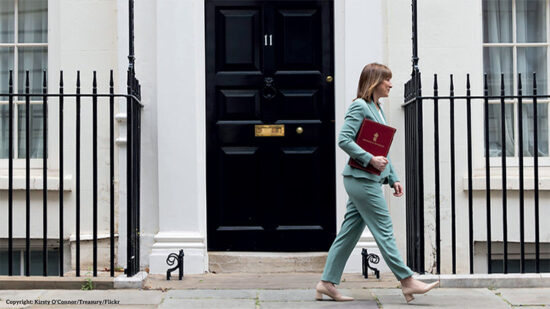Sterling
You can’t keep a good currency down for long, and as Sterling reaches it 3 ¾ year high against the euro, investors are wondering how high it can go. With euro zone news still bleak, risk is back in vogue and sterling is benefitting accordingly. Economic releases have been mixed, but even poor numbers are shrugged off fairly quickly as investors favour the UK’s AAA status. The worry is that the current move is getting over-extended and a sharp technical-led reversal is possible in the short term. We feel it would be prudent for euro buyers to look closely at covering some of their exposure at these levels, it’s been a good run, don’t miss it.
We feel at current levels sterling is over-extended, and a retracement, especially against the euro, is likely in the near future, particularly if the GDP number is weak.
US dollar
The dollar lost ground against most of the other major currencies last week, with exception of the euro, as risk appetite returned to the table. Federal Reserve Chairman Ben Bernanke was giving testimony for 2 days to the Senate Banking Committee, and while he said nothing new, he made it clear that he was ‘prepared to take further action as appropriate’ when asked about his readiness to provide more quantitative easing. This was probably the key for the moderate dollar sell off, with the commodity currencies being the main beneficiaries.
In all last week was heavy for economic data, and it all points to sluggish growth across all sectors. The big question is where does leave the dollar. It remains one of the main safe haven currencies, and as such will continue to be in demand. However it now seems investors are being more selective, and are looking for a return for the money as well as safety. We would expect the dollar to ease against the higher yielding commodity currencies such and Aussie and New Zealand, and also Sterling, but should remain steady against the Euro. Resistance – and the short term target on GBP/USD – is at $1.5775 with support at $1.5580 and $1.5400.
Euro
Euro zone news continues to be negative and consequently the single currency keeps falling with brief bouts of profit-taking preventing the currency from collapsing. The IMF warned that the euro zone is ‘in critical danger’, and advised the European Central Bank to press ahead with ‘unconventional measures’ to provide liquidity. They also described the euro as overvalued, which didn’t help. Given all of this, the currency fell to 12 year lows against the Swedish Kronor, a new 3 ¾ year low above €1.2850 against sterling, but managed to stay above the recent low of $1.2160 against a weakening US Dollar.
This week brings the preliminary manufacturing sector purchasing managers’ releases, and unless these throw up some positive surprises, we would expect the recent lows of $1.2165 to be tested on EUR/USD and €1.2950, and possibly €1.3000 on GBP/EUR – pending the UK GDP number.
New Zealand Dollar
The GBP/NZD rate traded in a tight range throughout last week with both currencies at the whim of risk appetite, or lack thereof. UK data did the pound few favours, but the slowdown in economic activity is sufficiently widespread that sterling wasn’t overly punished.
GBP/NZD has bounced off the lows in the last week or two, but the respite is likely to be temporary. With the Chinese and the US moving towards more stimulus the commodity currencies should benefit more than the pound, meaning a test of support at NZ$1.92800 is likely in the near future. Expect a range up to NZ$1.9700 in the interim.
Australian Dollar
The Aussie, along with the other commodity exporting countries, did well last week as investors searched for currencies that gave both safety and a yield, while the minutes of this month’s RBA meeting seemingly reduced the chances of further rate cuts in the near term.
Through last week the Aussie rallied against all of its 16 most-traded peers. However towards the end of the week, profit-taking set in and the 5 days of gains were eroded somewhat. There are fears that this week’s inflation data will show that prices grew at their slowest pace since 1999, increasing scope for the Reserve Bank to lower interest rates once again. Forward interest rates predict a 65% chance of 25bp cut at the next RBA meeting on August 7th. This is largely already reflected in prices, so should have only a small impact. We see the Aussie continuing to out-perform its peers, and see a fall below A$1.5000 in the coming week.
Canadian Dollar
The Canadian dollar rose to two month highs against the US Dollar as commodity exporting countries benefitted from a shift to higher yielding currencies, before falling back on soft inflation figures. Crude oil, Canada’s biggest export, climbed above $91 a barrel, and investors were betting on the Bank of Canada being the first among the Group of Seven peers to raise interest rates.
For the Canadian dollar, technical traders are looking for further appreciation against the US Dollar as various moving average levels have been breached. From a fundamental viewpoint, this would seem possible as well, as the US contemplates further asset purchases to stimulate growth. Support at C$1.0070 will be the first target.
Against sterling, there has been a lack of volatility, virtually trading within a 1 cent range all week. Both currencies are currently in demand, so we see a similar pattern this week, with a C$1.5750 to C$1.5950 range persisting for now.
Chinese Yuan
The USD/CNY rate traded in a narrow band last week, but the yuan looks set to finish the week stronger versus the greenback thanks to expectations the Chinese authorities will try to spur economic growth.
We expect further range trading this week, with the yaun tending more towards depreciation than appreciation as the EUR/USD rate remains under pressure.
Japanese Yen
The Japanese yen remains strong thanks to safe-haven flows, particularly as investors are now increasingly nervous about the prospects for more monetary stimulus in the US, although the BoJ blames Europe.
The yen looks likely to strengthen further against the dollar and this should mean the same thing for the pound. Support is at 122.00 and 119.60.
South African Rand
The rand, which had been strengthening versus the pound, fell sharply on Thursday following a surprise interest rate cut which dented the currency’s yield advantage. Increased chances of stimulus in the US and China served to mitigate the effects however.
The rand continues to trade around the R12.80 pivot, but the overall gains in commodity dollars on the back of hopes for more stimulus in the US and China has kept it on the front foot. We could see rates back over R13.00, but the pound remains vulnerable to bad news, meaning buying opportunities should be taken as and when they present themselves. Support remains at R12.60.
For more currency data and information on how to assist your clients with their international money transfers, please visit the International Adviser Currency Zone powered by Moneycorp.








